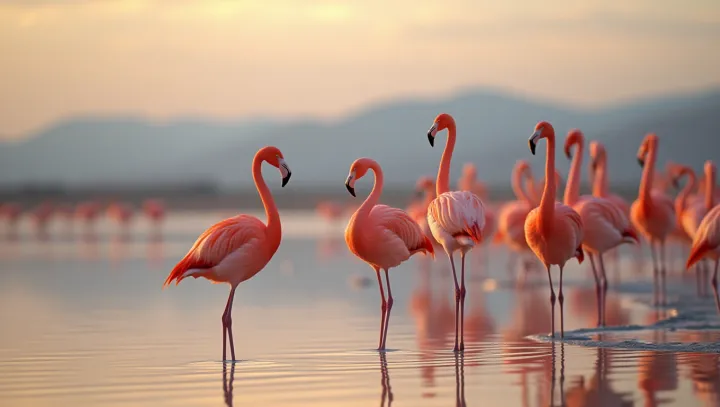Mysteries of Flamingo Plumage Unveiled

In the picturesque wetlands of Florida, a team of biologists has shed light on the long-enigmatic coloration of flamingos. By closely observing these birds, researchers have unveiled that the distinctive pink hue of flamingo plumage is a direct result of their diet, rich in carotenoid pigments. Carotenoids, compounds found in high concentrations within the crustaceans and algae consumed by flamingos, are pivotal in this transformative process.
Dr. Emily Carter, a leading avian biologist, elaborates, 'The vibrant pink is not merely an aesthetic feature; it's a testament to a healthy diet. These pigments are absorbed and deposited in their feathers, contributing to their brilliant coloring.' This discovery adds a layer of depth to our understanding of avian biology, not just in physical appearance but also in nutritional and environmental significance.
Predominantly, the health and vibrancy of a flamingo's plumage can serve as an indicator of ecosystem health, offering researchers a natural gauge for assessing habitat conditions. The implications of these findings are substantial, providing a window into the interconnectedness of diet, environment, and animal physiology. As climate change and ecological pressures reshape habitats worldwide, understanding these relationships is crucial for conservation efforts aiming to preserve such magnificent species.
Thus, the vivid charm of flamingos continues to captivate both scientists and the general public alike, symbolizing nature's intricate beauty. As research progresses, the ongoing study of flamingo pigmentation promises to unveil further secrets of avian life, echoing the importance of the natural world in its colorful glory.
